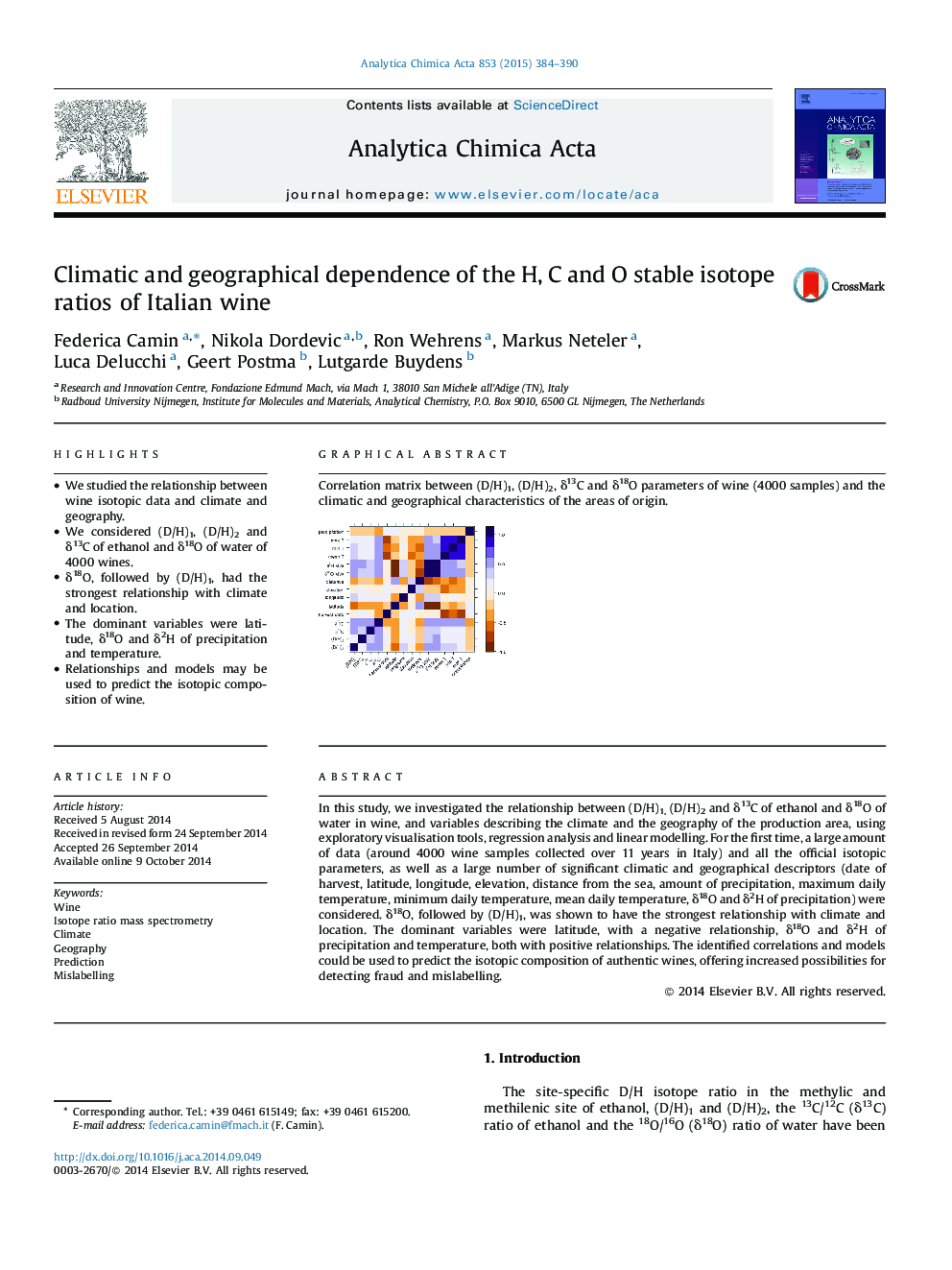| Article ID | Journal | Published Year | Pages | File Type |
|---|---|---|---|---|
| 1163678 | Analytica Chimica Acta | 2015 | 7 Pages |
•We studied the relationship between wine isotopic data and climate and geography.•We considered (D/H)1, (D/H)2 and δ13C of ethanol and δ18O of water of 4000 wines.•δ18O, followed by (D/H)1, had the strongest relationship with climate and location.•The dominant variables were latitude, δ18O and δ2H of precipitation and temperature.•Relationships and models may be used to predict the isotopic composition of wine.
In this study, we investigated the relationship between (D/H)1, (D/H)2 and δ13C of ethanol and δ18O of water in wine, and variables describing the climate and the geography of the production area, using exploratory visualisation tools, regression analysis and linear modelling. For the first time, a large amount of data (around 4000 wine samples collected over 11 years in Italy) and all the official isotopic parameters, as well as a large number of significant climatic and geographical descriptors (date of harvest, latitude, longitude, elevation, distance from the sea, amount of precipitation, maximum daily temperature, minimum daily temperature, mean daily temperature, δ18O and δ2H of precipitation) were considered. δ18O, followed by (D/H)1, was shown to have the strongest relationship with climate and location. The dominant variables were latitude, with a negative relationship, δ18O and δ2H of precipitation and temperature, both with positive relationships. The identified correlations and models could be used to predict the isotopic composition of authentic wines, offering increased possibilities for detecting fraud and mislabelling.
Graphical abstractCorrelation matrix between (D/H)1, (D/H)2, δ13C and δ18O parameters of wine (4000 samples) and the climatic and geographical characteristics of the areas of origin.Figure optionsDownload full-size imageDownload as PowerPoint slide
